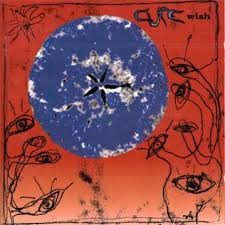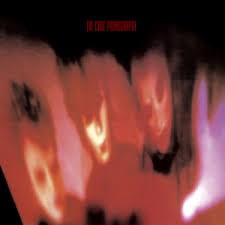Five of the best from The Cure
Five of the best from The Cure
- Disintegration (1989) - Often considered their magnum opus, this album blends atmospheric soundscapes with deep, introspective lyrics. It features some of their most beloved songs like "Lovesong" and "Pictures of You." The album's dark, melancholy tone and lush production defined The Cure's signature sound.
- Wish (1992) - This album showcases a more diverse range of styles, from upbeat pop tracks to introspective ballads. It contains their most successful US single, "Friday I'm in Love," as well as fan favorites like "High" and "A Letter to Elise." Wish balances accessibility with the band's characteristic emotional depth.
- The Head on the Door (1985) - Marked a shift towards a more polished pop sound, this album helped broaden The Cure's audience. It includes hits like "In Between Days" and "Close to Me." The record demonstrates a lighter, more eclectic approach compared to their earlier, darker material.
- Kiss Me, Kiss Me, Kiss Me (1987) - A double album that expanded The Cure's discography. It features a mix of pop hits ("Just Like Heaven"), rock anthems ("Why Can't I Be You?"), and experimental tracks. This album cemented their status as a major international act.
- Pornography (1982) - A landmark in gothic rock, this intense and dark album is considered one of their most influential. With its raw, emotional sound and bleak lyrics, Pornography represents the pinnacle of The Cure's early, post-punk phase. It includes tracks like "The Hanging Garden" and the title track "Pornography."
1. Disintegration (1989)

The Cure's 1989 album Disintegration is a pinnacle of gothic rock and alternative music. Released at the height of their commercial success, the band crafted a deeply atmospheric and emotionally charged masterpiece. Robert Smith's haunting vocals and lyrics are set against a backdrop of swirling synthesizers, hypnotic bass lines, and shimmering guitars. The album's lush production and expansive soundscapes create an immersive listening experience, with tracks often stretching beyond six minutes.
Disintegration's moody, melancholy tone resonated with fans and critics alike, spawning hit singles like "Lovesong" and "Pictures of You." Its influence extends far beyond the realm of post-punk, inspiring countless artists across various genres. Despite its dark undertones, the album achieved significant commercial success, cementing The Cure's status as alternative rock icons and leaving an indelible mark on the late 1980s and beyond music landscape.
2. Wish (1992)

The 1992 album Wish showcases the band's versatility, blending their signature gothic rock sound with more accessible pop elements. Following the dark, atmospheric album “Disintegration”, Wish presents a brighter, more diverse musical palette. Robert Smith's distinctive vocals and lyrics remain at the forefront, exploring themes of love, and longing. The album features some of The Cure's most commercially successful tracks, including the upbeat "Friday I'm in Love" and the melancholy "High."
Wish balances catchy pop hooks with the band's characteristic emotional depth, appealing to both long-time fans and new listeners. The production is crisp and polished, highlighting the interplay between shimmering guitars, driving rhythms, and atmospheric synthesizers. Wish topped charts worldwide, cementing The Cure's status as alternative rock icons and demonstrating their ability to evolve while maintaining their unique identity. Its influence can be heard in numerous indie and alternative acts that followed.
3. The Head on the Door (1985)

The 1985 album The Head on the Door marks a significant shift in the band's sound, blending their post-punk roots with more accessible pop elements. This transition helped broaden their appeal and set the stage for their mainstream success. Robert Smith's distinctive vocals and introspective lyrics are complemented by a more diverse musical palette, incorporating elements of new wave, psychedelia, and even world music. The album features some of The Cure's most enduring hits, including the upbeat "In Between Days" and the danceable "Close to Me."
The Head on the Door showcases the band's growing musical sophistication, with tighter arrangements and more polished production than their earlier works. This album played a crucial role in The Cure's evolution from cult favorites to international stars, influencing countless alternative and indie rock acts. Its blend of catchy melodies and emotional depth continues to resonate with listeners, cementing its place as a classic of 1980s alternative rock.
4. Kiss Me, Kiss Me, Kiss Me (1987)

Kiss Me, Kiss Me, Kiss Me, released in 1987, is a sprawling double album that showcases The Cure at their most diverse and ambitious. Building on the pop sensibilities of The Head on the Door, this record expands the band's sonic palette, incorporating elements of gothic rock, psychedelia, and even funk. Robert Smith's distinctive vocals and introspective lyrics are complemented by lush instrumentation, including prominent use of keyboards and horn sections. The album features some of The Cure's most iconic tracks, blending catchy pop hits with more experimental, atmospheric pieces.
Kiss Me, Kiss Me, Kiss Me solidified The Cure's status as alternative rock pioneers, achieving both critical acclaim and commercial success. Its eclectic mix of styles influenced a generation of musicians across various genres. The album's production is rich and layered, rewarding repeated listens and cementing its place as a cornerstone of 1980s alternative music. Kiss Me, Kiss Me, Kiss Me remains a fan favorite and a testament to The Cure's artistic vision and versatility.
5. Pornography (1982)

Pornography, released in 1982, stands as a defining moment in The Cure's discography and a landmark album in the post-punk and gothic rock genres. This intense and dark record showcases the band at their most visceral and emotionally raw. Robert Smith's anguished vocals and bleak lyrics are set against a backdrop of pounding drums, distorted guitars, and swirling synthesizers, creating a claustrophobic and haunting atmosphere. Pornography's themes of despair, alienation, and existential dread resonated deeply with listeners, influencing countless artists in the alternative and gothic rock scenes.
The album's harsh and abrasive production enhances its oppressive mood. Despite its challenging nature, Pornography has become a cult classic, praised for its uncompromising artistic vision and emotional intensity. It represents the pinnacle of The Cure's early, darker phase and continues to be regarded as one of the most influential albums in gothic rock. Pornography's impact on alternative music cannot be overstated, cementing The Cure's reputation as pioneers of the genre.
Recent Posts
Queen studio albums: A Review
Phil Collins Albums Ranked & Reviewed – Complete Guide to Every Studio Album
The best of Massive Attack
Let’s Make Magic
Book Your Event DJ Now




